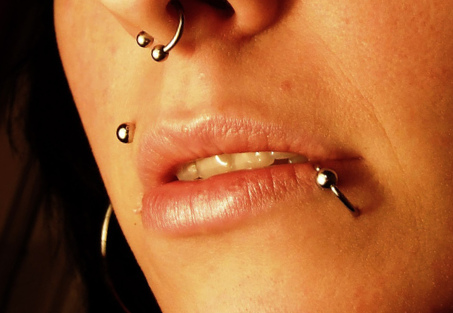
Snake Eyes Piercing, also known as the tongue web piercing, has been gaining popularity as a unique and edgy form of body art. However, safety is a primary concern when it comes to body modifications. If you’re considering getting a Snake Eyes Piercing, it’s essential to understand the potential risks and safety measures associated with this type of piercing.
The Risks and Safety Considerations
While Snake Eyes Piercing can be visually striking and aesthetically appealing, it’s crucial to be aware of the potential risks involved. Here are some safety considerations to keep in mind:
1. Professional Piercing Procedure
Getting Snake Eyes Piercing should only be done by a professional and experienced piercer who follows strict hygiene standards. Ensure that the piercing studio uses sterile equipment and high-quality jewelry to minimize the risk of infections and complications.
2. Potential for Infections
As with any piercing, there is a risk of infection if the piercing is not properly cared for during the healing process. It’s essential to follow the aftercare instructions provided by your piercer diligently and avoid touching the piercing with unwashed hands.
3. Rejection and Migration
Snake Eyes Piercing is a surface piercing, which means there is a risk of rejection and migration. The body may treat the jewelry as a foreign object and try to push it out. Regular check-ups with your piercer can help monitor the healing process and detect any potential issues early.
4. Impact on Oral Health
While Snake Eyes Piercing minimally affects teeth and gums compared to traditional tongue piercings, there is still a risk of dental damage if the jewelry is played with or clicked against the teeth. Be mindful of how you interact with the piercing to avoid any oral health complications.
5. Speech Impediment During Healing
During the initial healing period, some individuals may experience a slight speech impediment due to the presence of the jewelry under the tongue. This is a temporary issue that usually resolves as the piercing heals.
6. Not Suitable for Everyone
Individual anatomy varies, and not everyone may be a suitable candidate for Snake Eyes Piercing. People with a prominent tongue frenulum or other oral conditions may not be eligible for this piercing.
Ensuring Safety and Care
To enhance the safety of your Snake Eyes Piercing and promote proper healing, here are some essential care tips:
- Choose a Reputable Piercer: Research and select a professional piercer with a solid reputation and experience in performing Snake Eyes Piercing.
- Follow Aftercare Instructions: Strictly adhere to the aftercare instructions provided by your piercer. This includes rinsing your mouth with a saline solution after meals and avoiding alcohol, tobacco, and spicy foods during the healing period.
- Keep it Clean: Avoid touching the piercing with unwashed hands and keep the area clean to reduce the risk of infections.
- Be Gentle: Be cautious when speaking and avoid playing with the jewelry to prevent irritation and dental damage.
Conclusion
Snake Eyes Piercing can be a visually stunning and unique form of self-expression. However, it’s essential to understand the potential risks associated with this type of piercing and take necessary safety precautions. Choosing a professional piercer, following aftercare guidelines, and being mindful of how you interact with the piercing can help ensure a safer and more successful piercing experience. As with any body modification, consult with a professional and make an informed decision that aligns with your personal preferences and health considerations.